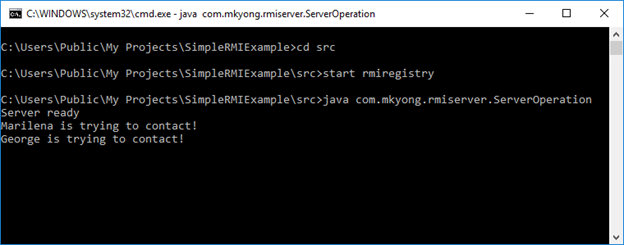A simple example of a Java-RMI setup using Maven
Apr 18, 2016 Netbeans makes your job really simple by loading the rmi registry unlike we have to load the registry by ourselves by using rmic tool, here we just have to run the server and the client file. Today you will learn how to implement a menu driven calculator program using rmi. I am new to RMI technology and trying to execute one small application using Netbeans IDE 4.0, but its not working. Eclipse wont run my RMI program?
Project Setup
Rmi Program Using Java

There are three subprojects in this example: RMIClient, RMIServer, and RMIInterfaces. These should be self-explanatory. The server sets up a basic class to be used as a remote object. The client then connects to it. Since both the client and the server need to be able to know the definition of the interface, that is broken out into a separate project that they both have as a dependency.
This project should build out of the box with Maven.
Running the project
Simple Rmi Program Using Netbeans To Groups
Running this can be a somewhat involved task, but here's the simple way to do it:
- Run the rmiregistry program. This should be in $JAVA_HOME/bin.
rmiregistry -J-Djava.rmi.server.useCodebaseOnly=false - Run the RMIServer. Make sure that when setting the RMI server codebase, the path ends with a /, otherwise it will not work.
java -Djava.rmi.server.useCodebaseOnly=false -Djava.rmi.server.codebase=file:C:pathtoclasses com.rm5248.rmiserver.RMIServerMain - Run the RMIClient. Make sure that when setting the RMI server codebase, the path ends with a /, otherwise it will not work. Also ensure that client.policy is accessible by the application.
java -Djava.rmi.server.useCodebaseOnly=false -Djava.rmi.server.codebase=file:C:pathtoclasses -Djava.security.policy=client.policy com.rm5248.rmiclient.RMIClientMain
Everything should now come up and you should see a message in the server window. The client prints out the number of characters that it sent to the server.
Other Notes
If you improve this example in any way, feel free to send a pull request.